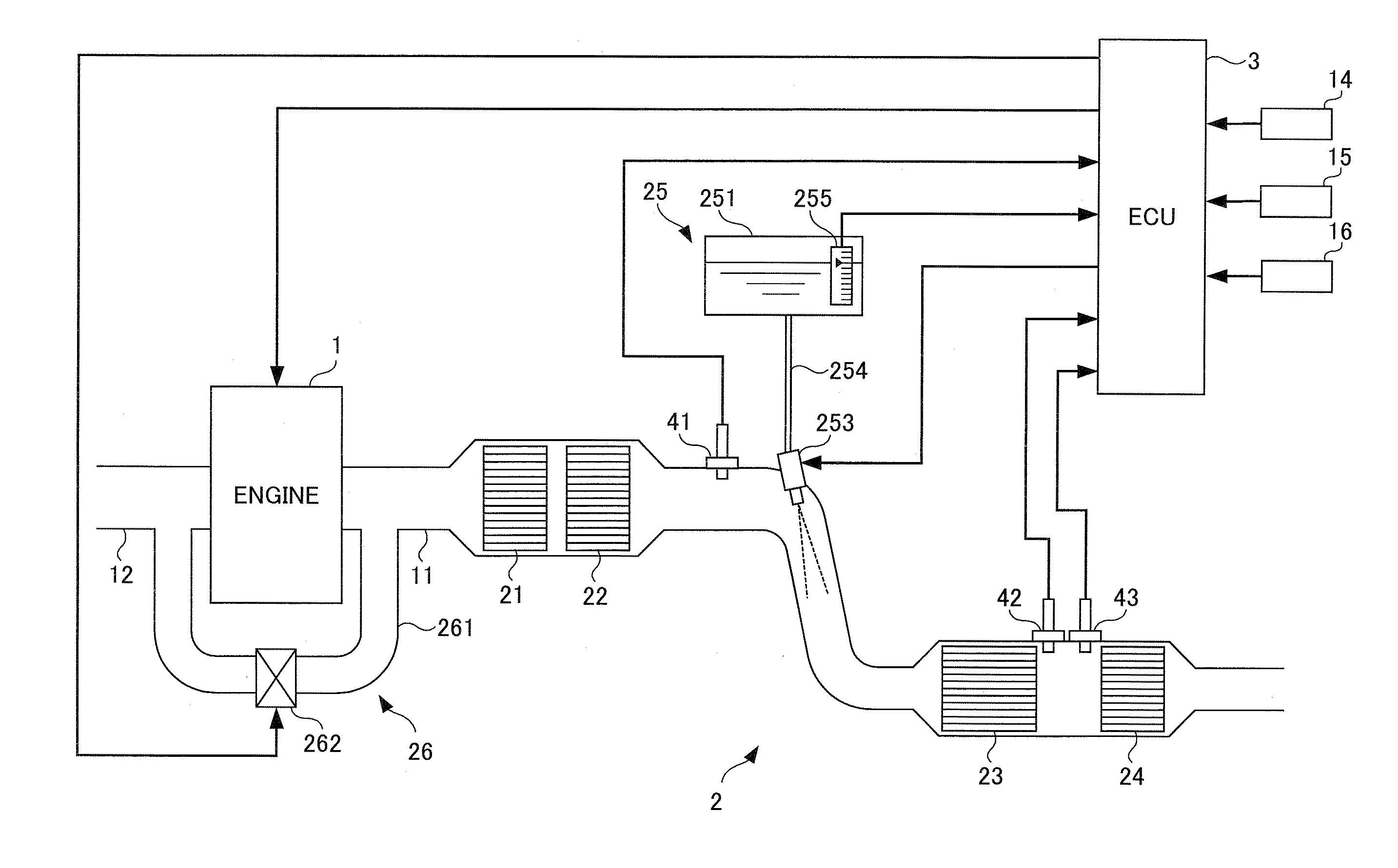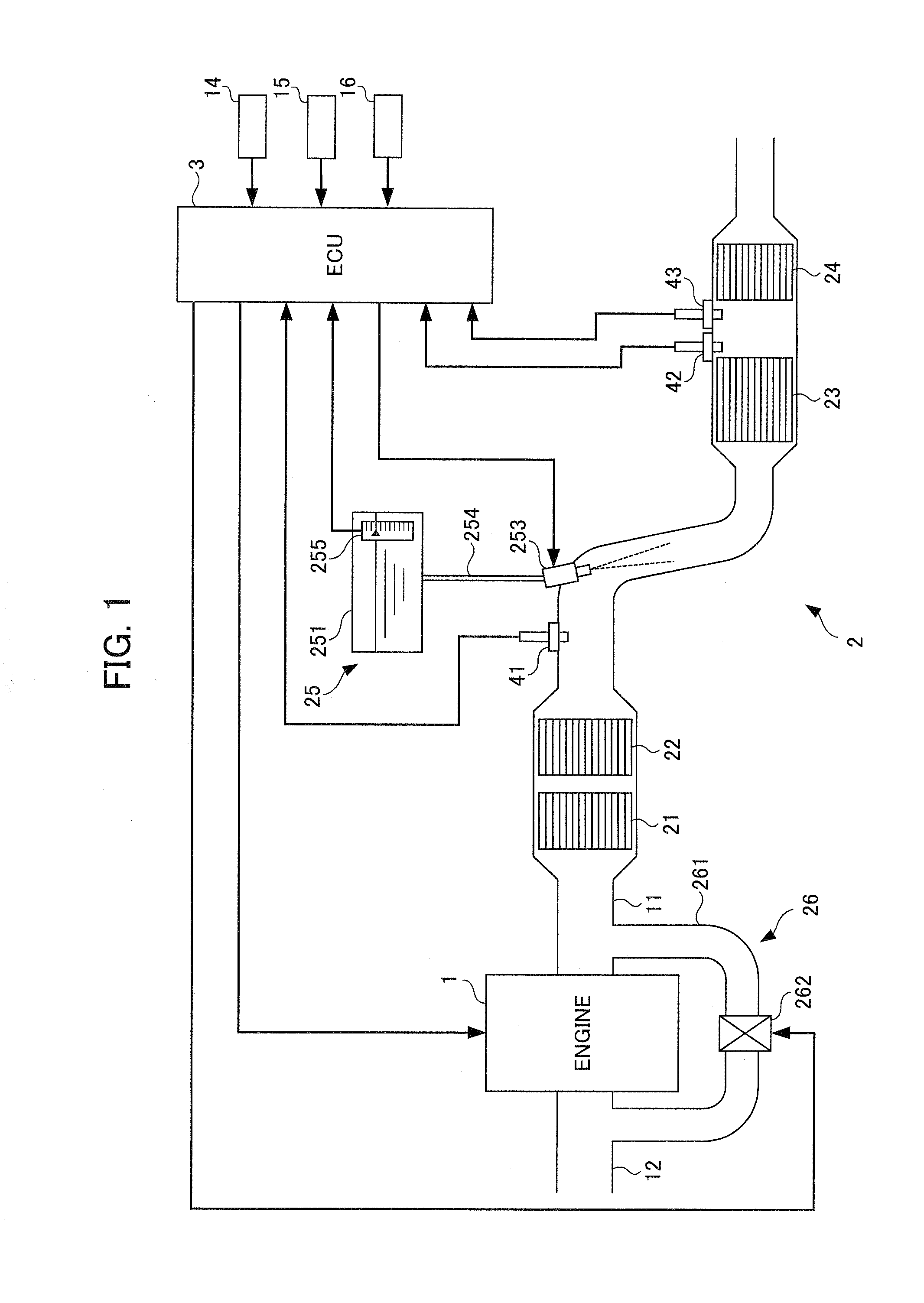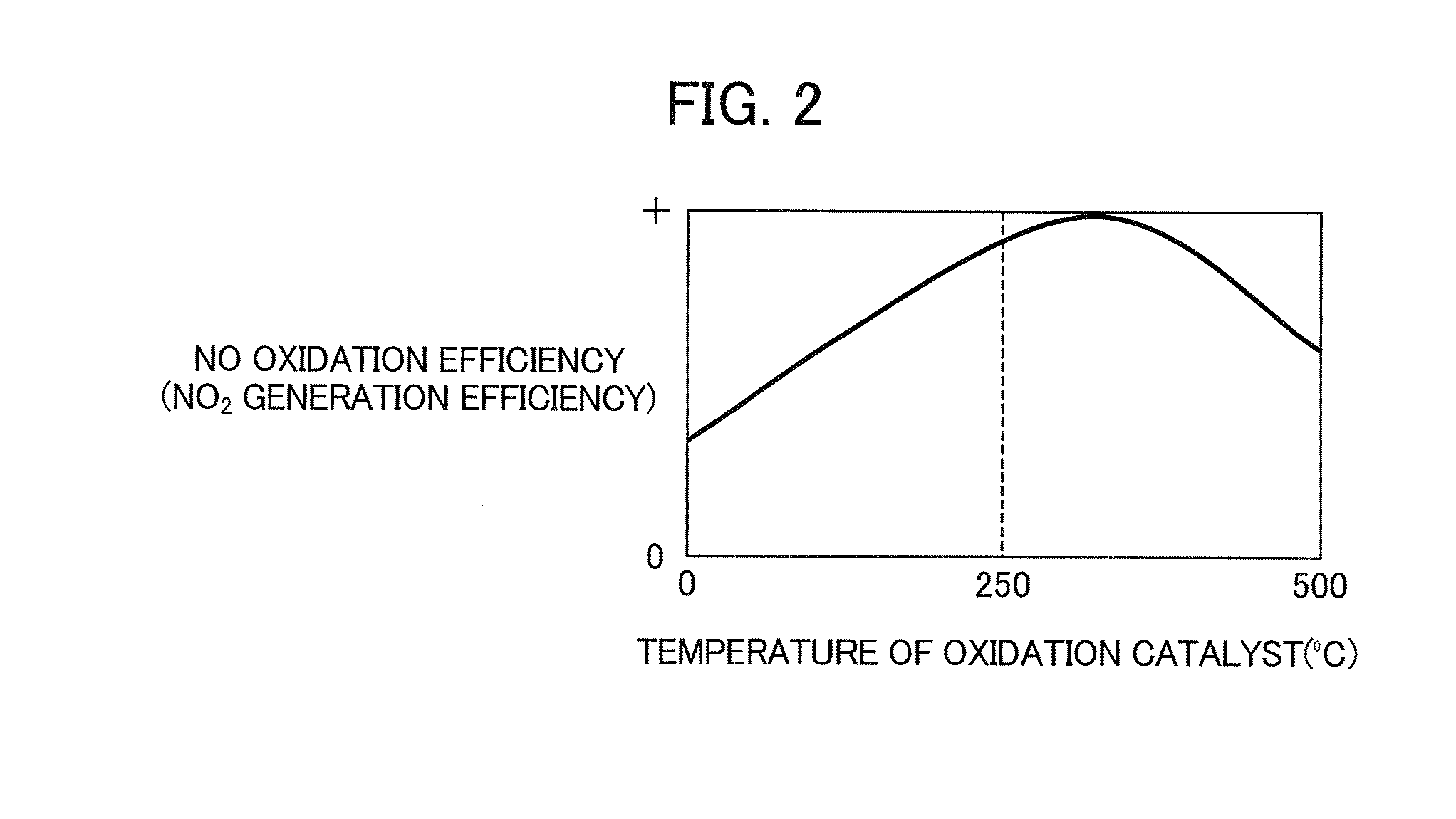Exhaust purification system for internal combustion engine
a technology for exhaust purification and internal combustion engines, which is applied in the direction of machines/engines, electrical control, separation processes, etc., can solve the problems of inability to map parameters in all operating regions, inability to maintain the nosub>2/sub>—nox ratio at 0.5 under such conditions, and inability to avoid deterioration of fuel economy and marketability. achieve the effect of increasing the nox purification rate to be high
- Summary
- Abstract
- Description
- Claims
- Application Information
AI Technical Summary
Benefits of technology
Problems solved by technology
Method used
Image
Examples
first embodiment
[0058]Hereinafter, a first embodiment of the present invention will be explained while referring to the drawings. FIG. 1 is a schematic diagram showing the configuration of an internal combustion engine (hereinafter referred to as “engine”) 1 and an exhaust purification system 2 thereof according to the present embodiment. The engine 1 is a gasoline engine of lean-burn operating type or a diesel engine, and is mounted in a vehicle, which is not illustrated.
[0059]The exhaust purification system 2 is configured to include an oxidation catalyst 21 provided in exhaust plumbing 11 of the engine 1, a CSF (Catalyzed Soot Filter) 22 that is provided in the exhaust plumbing 11 and collects soot in the exhaust, a selective reduction catalyst 23 that is provided in an exhaust plumbing 11 and purifies NOx in the exhaust flowing through this exhaust plumbing 11 under the presence of NH3 serving as a reducing agent, a urea injection device 25 that supplies urea water, which is a precursor of ammo...
second embodiment
[0199]Next, a second embodiment of the present invention will be explained while referring to the drawings. It should be noted that, in the following explanation, the same symbols are assigned for similar configurations to the first embodiment, and explanations thereof will be omitted.
[0200]In the selective reduction catalyst containing zeolite as described above, a function of adsorbing HC is also possessed in addition to the function of adsorbing NO2. In addition, the HC adsorbed to the selective reduction catalyst reduces NO2, which is the main factor making the NOx purification rate and NO2 storage amount of the selective reduction catalyst vary. The present embodiment differs from the above-mentioned first embodiment in the aspect of accounting for such adsorption of HC on the selective reduction catalyst.
[0201]FIG. 20 is a block diagram showing the configuration of a catalyst parameter estimation device 5A.
[0202]In the present embodiment, the configuration of a selective reduc...
PUM
| Property | Measurement | Unit |
|---|---|---|
| mole ratio | aaaaa | aaaaa |
| temperature | aaaaa | aaaaa |
| adsorption | aaaaa | aaaaa |
Abstract
Description
Claims
Application Information
 Login to View More
Login to View More - R&D
- Intellectual Property
- Life Sciences
- Materials
- Tech Scout
- Unparalleled Data Quality
- Higher Quality Content
- 60% Fewer Hallucinations
Browse by: Latest US Patents, China's latest patents, Technical Efficacy Thesaurus, Application Domain, Technology Topic, Popular Technical Reports.
© 2025 PatSnap. All rights reserved.Legal|Privacy policy|Modern Slavery Act Transparency Statement|Sitemap|About US| Contact US: help@patsnap.com



